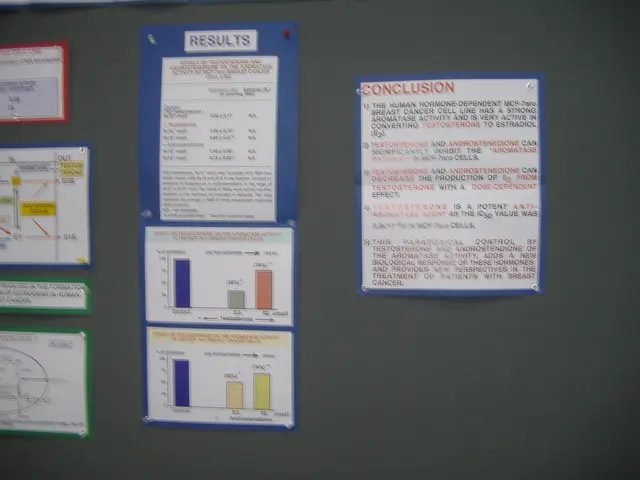Guidelines Unbound: Mastering Lucid Dreams - Understanding Advantages, Challenges, and Potential Hazards
Lucid dreaming, a phenomenon where individuals become aware they are dreaming during the dream state, has been gaining interest for its potential applications in personal growth, skill development, and therapy. This intriguing experience can be cultivated through various techniques, making it accessible to many.
One of the primary methods for training lucid dreams is reality checks. By performing simple actions like pinching yourself or looking at your hands during waking hours, you can develop the habit of verifying reality. This habit can carry over into your dreams, helping you discern whether you are dreaming or awake[1][2].
Another technique is Wake-Initiated Lucid Dreams (WILDS), which involves focusing on pre-sleep mental images to fall asleep consciously. This can be achieved through hypnagogic imagery or counting with the intention of becoming lucid[3].
Mnemonic Induction of Lucid Dreams (MILD) is another popular method. By repeating a phrase such as, "Tonight, I will notice that I am dreaming," before going to bed and visualizing yourself entering a lucid dream state, you can increase your chances of experiencing lucid dreams[4].
A less common but effective approach is Wake Back to Bed (WBTB), where you wake up after a few hours of sleep, stay awake for a short time, then go back to bed. This technique can increase your chances of entering a lucid dream state during the REM sleep phase[4].
Lucid dreaming offers a multitude of potential applications that can benefit both personal growth and skill development. For example, lucid dreams allow for vivid visualization and rehearsal of skills without risk, which can enhance motor skills and improve performance in sports and other activities[2][5].
Moreover, lucid dreaming provides a platform for confronting fears, understanding the subconscious, and exploring personal issues in a controlled environment[2]. It can also be used to explore creative solutions to problems by allowing free-flowing imagination and experimentation[2].
Lucid dreaming can have therapeutic applications, such as addressing nightmares and recurring nightmares. In fact, lucid dreaming therapy involves learning to lucid dream to stop nightmares from occurring or recurring[5].
Lucid dreaming can potentially help people with phobias by providing an opportunity for exposure therapy. By confronting and resolving issues within the dream state, individuals can overcome their fears[5].
In conclusion, lucid dreaming is a powerful tool for both personal development and skill enhancement, offering a unique opportunity to explore and control one's subconscious mind. It provides a realistic enough experience without feeling unsafe, making it a safe exploration ground for fears. Keeping a dream journal can help people who are interested in lucid dreaming to record their dreams and recall them more easily.
However, it is important to note that lucid dreaming may not be suitable for everyone. People with certain mental health problems, such as schizophrenia, should avoid lucid dreaming, as it may exacerbate their condition[6]. Lucid dreaming should not make it difficult to wake up, as one can only sleep for a set amount of time every night[7].
As research continues, we may uncover even more benefits and applications of lucid dreaming, making it an exciting area of study for psychologists, dream researchers, and individuals seeking personal growth and skill enhancement.
[1] http://www.dreamviews.com/lucid-dreaming/techniques/reality-checks [2] https://www.psychologytoday.com/us/blog/sleep-newzzz/201705/the-benefits-lucid-dreaming [3] https://www.psychologytoday.com/us/blog/sleep-newzzz/201705/the-benefits-lucid-dreaming [4] https://www.psychologytoday.com/us/blog/sleep-newzzz/201705/the-benefits-lucid-dreaming [5] https://www.ncbi.nlm.nih.gov/pmc/articles/PMC5535412/ [6] https://www.ncbi.nlm.nih.gov/pmc/articles/PMC5535412/ [7] https://www.ncbi.nlm.nih.gov/pmc/articles/PMC5535412/
- Individuals with diabetes may find it challenging to maintain a consistent sleep schedule due to fluctuating blood sugar levels.
- Ankylosing sclerosis, a form of arthritis, can lead to inflammation in the spine and joints, causing discomfort during sleep.
- Obesity increases the risk of developing sleep apnea, a condition where breathing stops and starts during sleep.
- Ulcerative colitis, a type of inflammatory bowel disease, can cause discomfort and interrupt sleep.
- Macular degeneration, a condition affecting the eyes, could potentially impact the vividness of lucid dreams.
- Depression can affect the quality of sleep, making it lighter and less restorative.
- Spondylitis, an inflammatory condition affecting the spine, might cause discomfort during sleep and affect wellbeing.
- Bipolar disorder can lead to irregular sleep patterns and disrupted sleep, impacting mental health and lifestyle.
- Dry eyes, a condition often associated with aging or certain medications, might affect dreaming due to discomfort during sleep.
- Degenerative disk disease can cause pain in the back and neck, affecting sleep quality and overall health-and-wellness.
- AQ (Autism Quotient) scores can predict the likelihood of difficulty falling asleep in children with autism.
- Colitis can cause abdominal pain and discomfort, making sleep difficult and impacting overall wellbeing.
- Dermatitis and psoriasis, skin conditions, can cause discomfort during sleep, affecting the quality of sleep and overall health.
- Science is yet to uncover a solution for addressing the connection between atopic (allergic) conditions, asthma, migraines, and sleep disturbances, opening up avenues for further research in health-and-wellness and mental-health domains.







